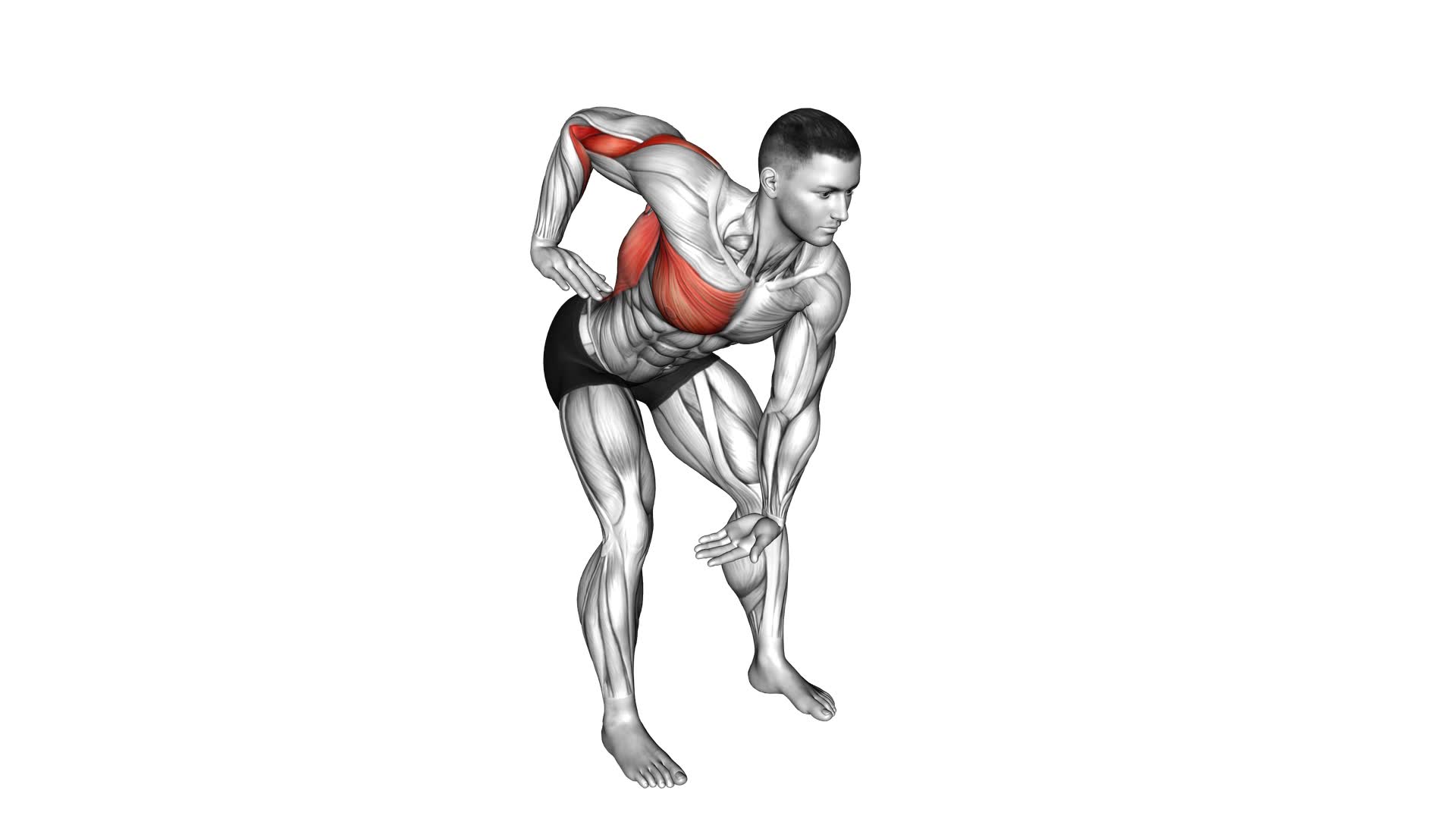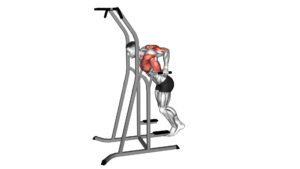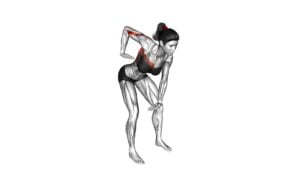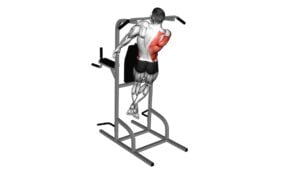Chest Pull Back (male) – Video Exercise Guide & Tips

Are you looking to strengthen and tone your chest muscles? Look no further!
Watch This Exercise Video
The Chest Pull Back exercise is a great way to target those muscles and achieve your fitness goals.
In this video exercise guide, we will show you the proper form and technique for this exercise, as well as variations and modifications to suit your needs.
Get ready to feel the burn and get the most out of your chest workout!
Key Takeaways
- The Chest Pull Back exercise targets back and shoulder muscles.
- It improves upper body strength and physical performance.
- The exercise corrects poor posture and reduces back pain.
- It enhances overall posture and appearance, providing aesthetic advantages with defined and toned muscles.
Benefits of the Chest Pull Back Exercise
To improve your upper body strength and posture, performing the Chest Pull Back exercise offers numerous benefits.
This exercise primarily targets the muscles in your back and shoulders, allowing you to develop a strong and defined upper body. By engaging these muscle groups, you can enhance your overall physical performance in activities that require upper body strength, such as lifting objects or participating in sports.
Additionally, the Chest Pull Back exercise helps to correct poor posture by strengthening the muscles responsible for keeping your shoulders back and your spine aligned. This can significantly reduce the risk of developing back pain and improve your overall posture, giving you a more confident and upright appearance.
Furthermore, incorporating this exercise into your fitness routine can provide aesthetic advantages as well. As your back and shoulder muscles become more defined and toned, you'll achieve a more sculpted and athletic look.
Equipment Needed for the Chest Pull Back Exercise
For the Chest Pull Back exercise, you'll need a resistance band or a cable machine. These pieces of equipment will provide the necessary resistance to target your chest and back muscles effectively.
Resistance bands are versatile and portable, making them a convenient option for home workouts or when you're on the go. They come in various levels of resistance, allowing you to adjust the intensity of your workout as needed.
If you have access to a gym or fitness center, a cable machine is another great option. It provides a consistent level of resistance throughout the exercise, helping you build strength and muscle mass.
Additionally, you may also use dumbbells to perform the Chest Pull Back exercise, as they can provide a different type of resistance.
Proper form and technique are crucial for maximizing the benefits of this exercise and preventing injury.
Proper Form and Technique for the Chest Pull Back Exercise
Start by gripping the resistance band or cable machine handles with your hands. Maintain a firm grip throughout the exercise to ensure stability and control.
To perform the chest pull back exercise with proper form and technique, follow these steps:
- Stand with your feet shoulder-width apart and keep your back straight.
- Extend your arms straight in front of you, keeping them parallel to the floor.
- Pull your shoulder blades together as you squeeze your chest muscles.
- Slowly and controlled, pull the resistance band or cable machine handles towards your chest, while keeping your elbows close to your body.
- Pause for a moment when the handles reach your chest, feeling the contraction in your chest muscles.
- Slowly, extend your arms back to the starting position, maintaining control over the resistance band or cable machine.
By performing the chest pull back exercise correctly, you can avoid common mistakes such as using momentum to complete the movement or rounding your shoulders. Focus on muscle activation in your chest by squeezing your shoulder blades together and maintaining tension in your chest muscles throughout the exercise.
Remember to breathe steadily and maintain proper form to maximize the effectiveness of the exercise.
Variations and Modifications of the Chest Pull Back Exercise
Explore different variations and modifications of the chest pull back exercise to target specific muscle groups and add variety to your workout. By incorporating these variations and modifications, you can challenge your muscles in new ways and prevent plateaus in your training.
One variation of the chest pull back exercise is the incline chest pull back. This exercise is performed on an incline bench and targets the upper chest muscles more intensely.
Another variation is the single-arm chest pull back, which allows you to focus on one side of your body at a time, helping to correct any muscle imbalances.
Additionally, you can try the resistance band chest pull back, which adds an element of instability and requires more muscle engagement to control the resistance.
If you're looking for a modified chest pull back exercise, you can use lighter weights or resistance bands to decrease the intensity, or perform the exercise on an exercise ball to challenge your core stability.
These variations and modifications can help you customize your chest pull back workout to meet your specific goals and needs.
Now, let's explore some tips for getting the most out of your chest pull back workout.
Tips for Getting the Most Out of Your Chest Pull Back Workout
To maximize the effectiveness of your chest pull back workout, focus on proper form and engage your core throughout the exercise. Here are some tips to help you get the most out of your workout:
- Maintain proper posture: Stand tall with your shoulders back and down, and your chest lifted. Avoid hunching or slouching, as this can put unnecessary strain on your back and shoulders.
- Use a controlled motion: Slowly pull the resistance band or cable towards your chest, squeezing your shoulder blades together. Avoid any jerky or fast movements, as this can reduce the intensity of the exercise.
- Engage your core: Throughout the exercise, consciously engage your core muscles by tightening your abdominal muscles. This will help stabilize your body and prevent any unnecessary swaying or arching of your back.
- Avoid common mistakes: Be mindful of these common mistakes that can hinder the effectiveness of your chest pull back workout:
- Allowing your elbows to flare out to the sides instead of keeping them close to your body. This can shift the focus away from your chest and onto your shoulders.
- Using excessive weight or resistance that compromises your form. It's better to start with lighter weights and gradually increase the intensity as you become more comfortable with the exercise.
Frequently Asked Questions
How Often Should I Perform the Chest Pull Back Exercise?
To improve your posture, it's important to perform the chest pull back exercise regularly. By strengthening your chest muscles, this exercise helps pull your shoulders back, aligning your spine and reducing the risk of slouching.
The frequency at which you should do this exercise depends on your fitness level and goals. Beginners can start with 2-3 times a week and gradually increase as they get stronger. Advanced individuals can perform it 4-5 times a week for optimal results.
Can Women Also Benefit From Doing the Chest Pull Back Exercise?
Yes, women can definitely benefit from doing the chest pull back exercise. It's a great exercise for women's fitness as it targets the muscles in the chest, back, and shoulders, helping to improve posture and upper body strength.
There are variations of the chest pull back exercise that can be done to suit different fitness levels and goals. Incorporating this exercise into your workout routine can help you achieve a stronger and more toned upper body.
What Muscles Does the Chest Pull Back Exercise Target?
The chest pull back exercise targets multiple muscles in your upper body. It primarily works your chest muscles, specifically the pectoralis major and minor. Additionally, it engages your shoulders, back, and arms.
Can I Do the Chest Pull Back Exercise Without Any Equipment?
Yes, you can do the chest pull back exercise without any equipment. There are alternative exercises that can target the same muscles.
However, using equipment such as resistance bands or dumbbells can provide additional benefits, such as increased resistance and a greater range of motion.
It's important to choose the option that suits your fitness level and goals. Always consult with a professional trainer before starting any new exercise routine.
Is It Normal to Feel Soreness in My Back After Performing the Chest Pull Back Exercise?
Feeling soreness in your back after doing the chest pull back exercise is normal. This is because the exercise targets your back muscles and activates them.
The soreness is a sign that your muscles are working and being challenged. It's important to listen to your body and give yourself enough rest and recovery time.
If the soreness persists or becomes too uncomfortable, it's best to consult with a healthcare professional.
Conclusion
In conclusion, the chest pull back exercise is a highly beneficial workout for men that targets the chest muscles. It can be performed with minimal equipment and requires proper form and technique for optimal results.
Variations and modifications can be made to cater to individual fitness levels. By following these tips and incorporating the chest pull back exercise into your routine, you can maximize your chest workout and achieve your fitness goals effectively.

Author
Years ago, the spark of my life’s passion ignited in my mind the moment I stepped into the local gym for the first time. The inaugural bead of perspiration, the initial endeavor, the very first surge of endorphins, and a sense of pride that washed over me post-workout marked the beginning of my deep-seated interest in strength sports, fitness, and sports nutrition. This very curiosity blossomed rapidly into a profound fascination, propelling me to earn a Master’s degree in Physical Education from the Academy of Physical Education in Krakow, followed by a Sports Manager diploma from the Jagiellonian University. My journey of growth led me to gain more specialized qualifications, such as being a certified personal trainer with a focus on sports dietetics, a lifeguard, and an instructor for wellness and corrective gymnastics. Theoretical knowledge paired seamlessly with practical experience, reinforcing my belief that the transformation of individuals under my guidance was also a reflection of my personal growth. This belief holds true even today. Each day, I strive to push the boundaries and explore new realms. These realms gently elevate me to greater heights. The unique combination of passion for my field and the continuous quest for growth fuels my drive to break new ground.







